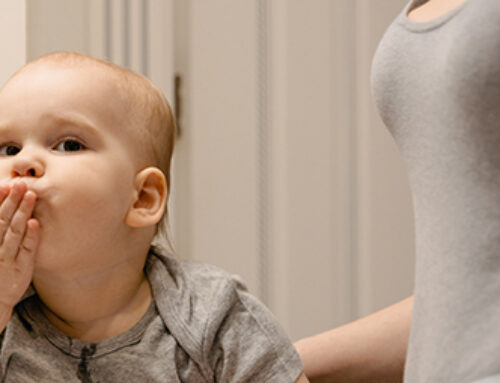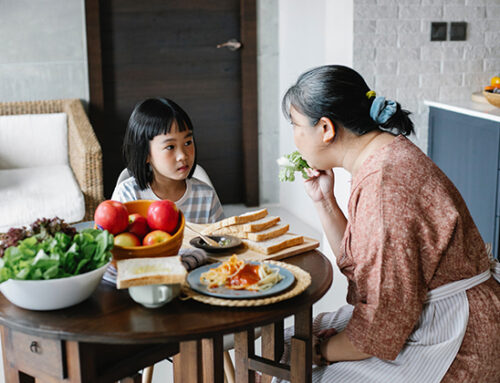With fall comes a change in colors, anticipation for the holidays, outdoor activities, and piles of falling leaves. Using leaves at home is a great way to foster the development of your child’s language skills. With an abundance of leaves of various shapes, sizes, and colors falling, there is endless potential for activities. Your child will enjoy learning about where different leaves come from, why they change colors, and why they fall on the ground. Below are specific language areas and examples of leaf related activities that you can try at home to support development.
1. Vocabulary: Playing outside in the leaves is a great way to work on building your child’s vocabulary knowledge. During play, talk about what you are doing and what you see. Repetition is key for children, and the more your child hears the words, the more likely they will be to learn them. Here are some ideas of words that you can use when playing in the leaves:
- Nouns: Leaf, rake, bag, tree, stick, squirrel, bird, sun, cloud, pile
- Verbs: Jump, throw, rake, crash, fall, play, rip, stomp, skip
- Adjectives: Colors, big, little, colorful, crunchy, dry, soft, flat
2. Pretend Play: Once you’ve picked some of your favorite leaves from outside, bring them home to work on supporting your child’s ability to engage in pretend play. Try using leaves as boats or cars for people, like blankets for baby dolls, or food for animals. You can even try cutting your leaves to resemble food and pretend to be at a restaurant.

3. Following Directions: You can work on following directions when making any craft you choose with the leaves you’ve collected. A quick google search will lead you to many different options! Some favorites include gluing a leaf onto paper and drawing on the remaining body parts to make a turkey or drawing a lion’s face and using leaves to make its mane. You want to set up the craft so that there are clear steps that your child can complete. Make sure you are giving your child directions for the steps of the craft at a level that they can understand. For younger children, focus on delivering one instruction at a time. It might be helpful to pair this instruction with a picture of what they’re supposed to be doing or by you modeling the step yourself prior to instructing your child. For older children, you can work up to delivering multiple instructions at a time or giving them a written list of the instructions to work on independently. Here are some ideas of simple steps that you can focus on when doing a craft with your child.
- Collect leaves
- Cut/crumble the leaves
- Collect glue
- Put glue on the paper
- Put leaves on the glue
- Color a picture on the paper
4. Prepositions: You can use leaves to teach or practice prepositions with your child. When teaching prepositions, model the word while also directing your child’s attention to the leaf’s location. Again, repetition is key! Here are some examples of ways to target prepositions when playing with leaves.
- On/Off – Tape leaves on different surfaces that your child can take ‘off’ or put ‘on.’
- Up/Down – When playing outside in the leaves, throw them ‘up’ in the air and watch them fall ‘down.’
- Under – Hide objects ‘under’ the pile for your child to find.
- Out/In – After making a leaf pile, jump ‘in’ and come ‘out’ of the pile.
- When your child understands the meaning of different prepositions, you can work on having them practice using them. Hide leaves around the room, and then have your child tell you where the leaves are hiding.

Blue Bird Day fosters socialization, sensory regulation, and pre-academic learning in children ages 2-7 years in therapeutic rotations that simulate preschool and kindergarten settings. Our compassionate therapists practice a relationship-based and family-centered approach, provide parent training, and collaborate on goals and individualized intensive treatment plans for your child.
We believe in a collaborative and multi-disciplinary team approach to therapy. A team of occupational therapists, speech-language pathologists, dietitians, developmental therapists, behavioral therapists, physical therapists, and therapeutic assistants are created for each child to ensure child and family are fully supported and the best possible results are achieved.
Options for individualized, group and virtual therapy sessions are available as well.
Want to learn more or you have a specific question? Feel free to connect with us here!



